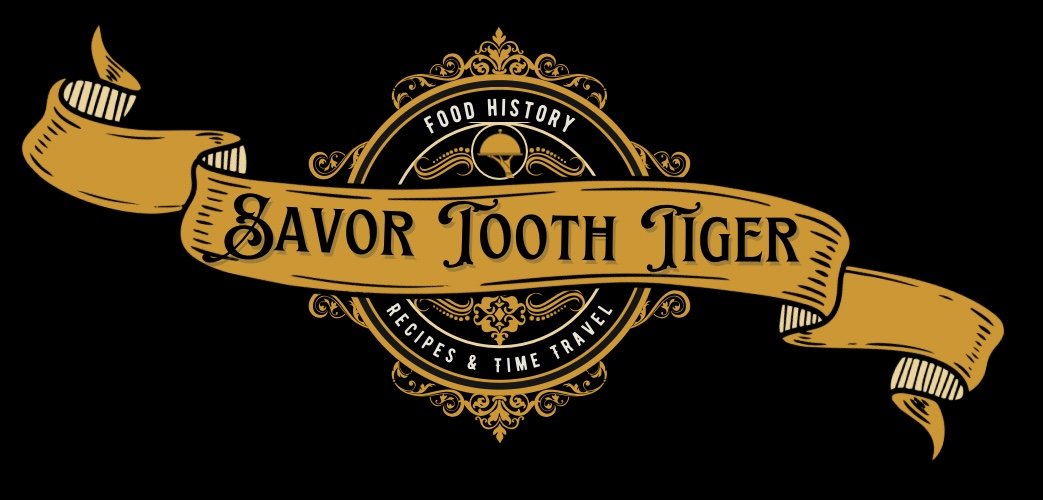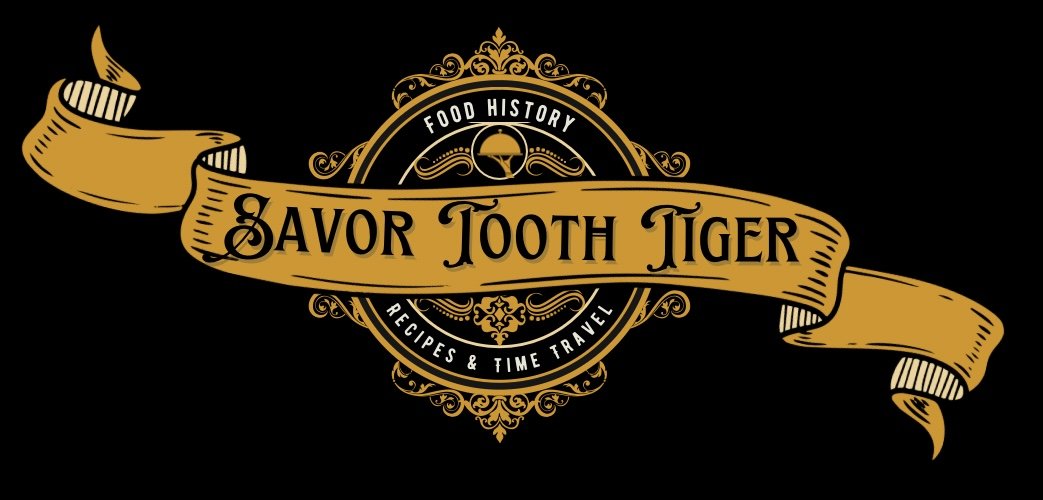Oregon Trail
We’re going back to the 1830’s to 1860’s on the Oregon Trail to find out what pioneers were eating along their journey. Before railroads connected the west, Pioneers in covered wagons traveled about 2000 of miles on the Overland trail, taking roughly 6 months at 3-5 miles per hour! On my last family road trip, I used my car’s air conditioning vent to cool down my 4 year old’s fries because they were quote “ too hot”. After reading accounts from a mother’s diary that said” I gave birth to my 8th child today in our covered wagon”, I promise to never complain again. If you’re from my generation or before, you may remember the iconic computer game, The Oregon Trail that simulated this journey and taught us all about dysentery. Although there is so much American nostalgia in the Old West and the Oregon Trail, It’s important to remember that Westward Expansion meant the loss of many Native American lives and land. We will talk about how tough the Oregon trail was but we’ll also discuss the Trail of Tears. I grew up in Kansas City, Missouri right by the trailhead of the Oregon trail, Independence Missouri. My great great great grandparents traveled from Ohio to Kansas in a covered wagon in the 1860s. My family still has a spinning wheel that made that journey. I like that my ancestors stopped in the Missouri/Kansas area. We don’t need to go the whole trail, it’s nice here! That was the case with many families. Some turned back. Some settled. Some made it all the way. Now let’s see what they cooked!
A Day of Food on the Oregon Trail
Breakfast: pioneers cooked meals over open fire, using buffalo chips as fuel (dried dung). (When i start feeling bad for myself I remember that at least i don’t have to cook 3 meals a day over burning buffalo dung) Bacon and biscuits were common. Pancakes, beans and oatmeal were also options.
Midday meal: Some pioneers cooked this meal ahead at breakfast so that they could rest. When supplies of fresh food were low or they couldn’t cook because of weather conditions, they ate dried fruit, hardtack, and bartered jerky with Native American tribes. Coffee and tea provided extra energy and boiling the water killed bacteria.
Supper: To supplement the wagon food supply, pioneers hunted turkey, prairie hen, bison and duck. They also fished and gathered local fruits & vegetables. For dessert a pie made with dried apples.
What food was packed on the covered wagon? Hundreds of pounds of flour, lard, bacon, beans, salt and dried fruit were packed to feed families on their 6 month journey. Dried, smoked and salted foods were the means of preservation. Canned goods weren’t widely available or reliably safe until the 1850’s and 60s. Many people sold their homes and possessions to pay for the wagon, oxen, & supplies. Besides bartering with Native Americans or fellow travelers, there were only a few provisioning points Like Ft. Laramie and Salt Lake City. Eggs, milk, butter, jam and bread were available for a very steep price! Fort Laramie in Wyoming became known as fort sacrifice- many leaving heavy items like cast iron stoves, antique furniture and pianos behind. A piano is the least practical item i can imagine to bring on a covered wagon. One freebee along the way? Saleratus (baking soda). Pioneers gathered buckets of sodium bicarbonate near Independence Rock, Wyoming, which they used for baking and cleaning.
Cooking outdoors created many obstacles. Sometimes weather simply didn’t permit cooking. Rain and mud prevented cooks from starting fires and wind through the plains could easily spread wildfires. What did they use as fuel for the fire? Wood, hay, sagebrush and even buffalo dung (called buffalo chips) were burned to fuel the cooking fires. Thankfully I’m using wood here today. A quote from pioneer Miriam Colt in 1856… “it is not very agreeable work, cooking out of doors in this windy, rainy weather or when the scorching sun shines. The bottoms of our dresses are burnt full of holes now and they will soon be burnt off.” I can confirm that cooking over open fire with a full length dress is dangerous!
Many adults walked along the trail to keep the wagon from being too heavy so they needed plenty of calories to sustain themselves. Bacon, carbohydrate rich foods, coffee and butter helped energize pioneer diets. Some brought cows along the journey for milk. Crafty pioneers learned that if they put cream at the back of the wagon, the movement would churn the butter for them! They strained the buttermilk to drink and used the butter for recipes like… dried apple pies. More than once I came across quotes like, “spit in my ears and tell me lies, but give me no dried apple pies.” What could be so bad about them?! Were they just sick of dried apples? Did the pie not cook properly in a Dutch oven? I had to find out for myself. Dried apples were incredibly common on covered wagons. They were revived with boiling water, drained, added to sugar and placed in pie crust to bake in a Dutch oven over hot coals.
As you can imagine, there weren’t many recipes on the trail except for passed down family recipes or maybe access to a cookbook or 2. Pioneer cooks made due with their food supply and what they could hunt or gather. Dried fruit provided vitamin C and nutrients that helped prevent scurvy. I would think an apple pie would be a welcome change from a bland diet of potatoes, beans, bacon, and bread. Another pioneer said “One does like a change and about the only change we have from bread and bacon is bacon and bread.” The Dutch oven was set on coals and covered with even more hot coals on top. Full disclosure, my Dutch oven has sloped edges and didn’t really hold the coals very well so I was forced to bake the rest of my pie in…an oven. What a terrible pioneer I am. Hahaha.

Dried Apple Pie
Ingredients
- 2 1/2 sticks unsalted butter (cold and cubed)
- 1/2 teaspoon salt
- 1/2 cup to 3/4 cup ice water (add a little at a time. You may not use all of it)
- 3 cups all purpose flour (plus more for rolling)
- 1 pound dried apples (not apple chips)
- 4 cups boiling water
- 1 cup of sugar
- 1 teaspoon cinnamon (optional)
Instructions
- To make the dough, cube the cold butter and work it into the flour and salt, breaking it up between your fingers until the butter is the size of a pea or smaller.
- Slowly work in the cold water until a rough dough is formed.
- Dump the dough onto a floured work surface. Knead the dough until the butter is worked in. Dust with flour and roll out the dough. Divide the dough between 1/3 and 2/3. The larger portion will create the bottom crust of the pie. The smaller third will go on top.
- To create the filling, rehydrate the dried apples with boiling water. Allow to stand 5 minutes. Drain the apples well.
- In a bowl, mix the apples, sugar and cinnamon (if using).
- In a Dutch oven or pie plate, use the larger dough as the base, add the filling, add the smaller dough portion on top. Crimp the edges of dough together and trim the excess. If using a dutch oven, put parchment paper underneath the dough to remove easier.
- Bake in a 400 degree Fahrenheit oven for 1 hour or until golden brown. Do not use the lid of the Dutch oven in an actual oven. If cooking over open fire, place Dutch oven directly on the coals. With the lid on, cover with additional hot coals. Allow to cook for at least 45 minutes, adding more hot coals as needed. Check for doneness until golden brown.

Hard Tack
Ingredients
- 2 cups all purpose flour
- 1 cup water
- 2 teaspoons salt
Instructions
- Preheat oven to 375 degrees Fahrenheit.
- Mix dough in a bowl with a spoon until combined.
- On a floured work surface, flatten dough. Roll out into a rectangle using a rolling pin. Cut into squares using a knife or a pizza roller.
- Place squares on a sheet tray. Use a chopstick to make dots into the hard tack. Push all the way down to the sheet tray.
- Bake for 30-35 minutes until lightly browned. They will be hard! (Hence the name) You can dip it in coffee or soup to soften.




